This antique pan has a most useful past, present, and future.
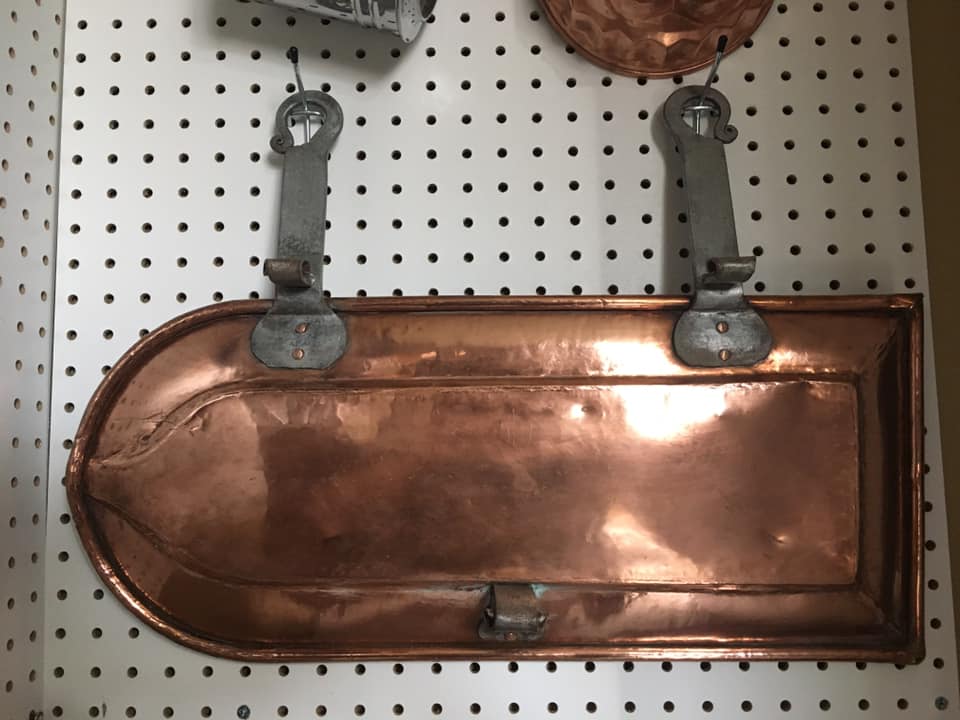
| Type | Tinned lèchefrite with forged iron handles and copper rivets |
| French description | Lèchefrite étamé avec poignées forgées en fer et rivets en cuivre |
| Dimensions | 59cm long by 26cm wide (23 by 10 inches), not including handles |
| Weight | 2720g (6 lbs) |
| Maker and age estimate | Unknown; late 19th century |
| Source | Normandy Kitchen Copper (France) |
VFC says: This guest post was contributed by reader and copper fan Amy L.
A few weeks ago, in mid-July on my birthday, I purchased an antique lèchefrite pan from Fidelma and William Cox, the owners of Normandy Kitchen Copper on Etsy. This item had been in their shop for a few weeks I believe, however each time I browsed for copper cookware and decorative copper to add to my collection, I looked past it. I am new and a novice when it comes to copper cookware and collecting, so I admit at the time I had no idea what I was looking for, and absolutely no idea what a lèchefrite pan was. After a few really great purchases from Fidelma and William, I grew to trust their knowledge and the quality of the items they source, so I began a discussion with Fidelma about copper collecting.
As a rookie, one of the things I inquired about was what pieces I should look for, and if there are any rare pieces that I might want to add to my collection. I also asked about what she collects and so on. Kind and knowledgeable as always, Fidelma said that she likes hard-to-source antiques, such as daubières and lèchefrite pans, and she described their functions. Excited to have this new information, I looked at a few models she had available in her store and found my pan. Unlike before, the pan stood out to be as more than an almost flat piece of copper with handles. I realized its purpose and noticed all of its beautiful intricacies that I looked past before. At that moment, I decided that this was the next piece I would add to my collection! I liked it so much that I had to have it, and today I am so glad it is in my kitchen!

This fun shaped pan (how I describe it to my family and friends) dates to the late 19th century, although its design has been around since the middle ages. In my opinion, it is in shockingly great condition for its age, still with a warm rose gold hue after some cleaning and polishing. The pan only has a few small dings, dents, and scratches, which is expected as part of its age and culinary function. This adds to its character and shows that it was lovingly used and cared for in its past.
The current tin is in pristine condition and therefore not original. It has been retinned at some point in its life and it is ready to be used in my kitchen! If I had to select one feature that I love most about this pan, it would be the hand-forged iron handles and stabilizers fastened onto the pan by way of hand-forged copper rivets. Aesthetically, I think they are very pretty. While they were made with purpose and function in mind, they also look artistic and sort of whimsical, as the iron curls tightly into itself into spirals. I like to believe that the artisan who crafted this pan was talented with his hands and paid close attention to detail. I hope he was very proud of his work because this pan, in my humble opinion, is stunning. As a trained historian with a background in art history as well, I think this historic beauty belongs in a museum, as it would be a wonderful educational piece, or pictured on a slide presentation shown on a projector screen during a college lesson. This pan is equal parts history, function, and beauty and CLEARLY, I am so excited to have it.
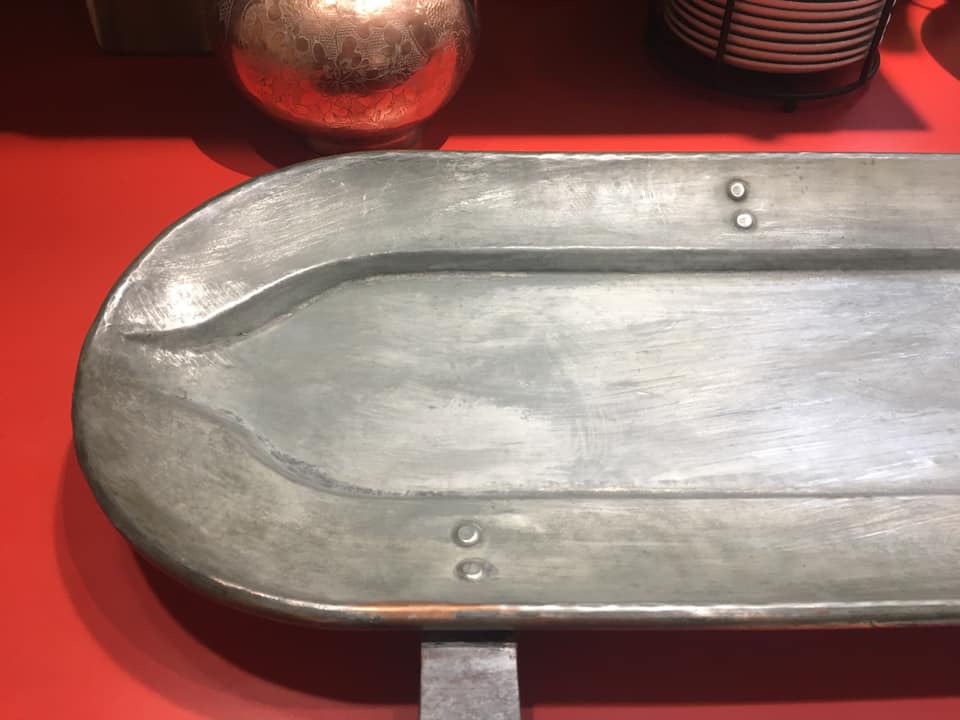
SO, you ask, what in the world do we use an oddly shaped pan like this for? I’ll explain. The lèchefrite pan’s main function and purpose is, and always has been, to catch juices that drip off of poultry that is cooked rotisserie-style, a method of cooking that also dates to the Middle Ages. 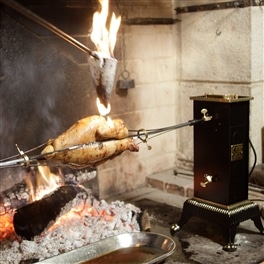 The shallow depression in the center of the pan collects savory juices that drip off of the poultry as it cooks, and whoever is cooking brushes the juices back onto to poultry, or pours them onto the poultry, by way of the side of the pan that forms a point-like-spout for pouring (see picture). This results in chicken that is juicy, tender, and full of flavor with crisp and tasty skin.
The shallow depression in the center of the pan collects savory juices that drip off of the poultry as it cooks, and whoever is cooking brushes the juices back onto to poultry, or pours them onto the poultry, by way of the side of the pan that forms a point-like-spout for pouring (see picture). This results in chicken that is juicy, tender, and full of flavor with crisp and tasty skin.
In my opinion, rotisserie is still one of the best cooking methods for chicken, as it rarely disappoints. This pan performs (and has always performed) other functions as well. The lèchefrite can be used as a baking tray, and it can be placed underneath a grill when cooking cheese or vegetables. It can be used for poaching fish or roasting meats, and it can function as a trivet for holding hot plates. Its iron stabilizers, that I adore so much, are fitted to ensure trouble-free use. During this phase of my pan’s life with me, it will probably be used as a baking tray to make cookies with my 9-year-old nephew and 5-year-old niece, who I am very excited to introduce to copper cookware when things improve hopefully soon with the pandemic. My low-key goal is for them to someday turn into copper cookware enthusiasts too, as one or both of them will eventually inherit my collection. I also plan to use this pan as a large trivet over time.
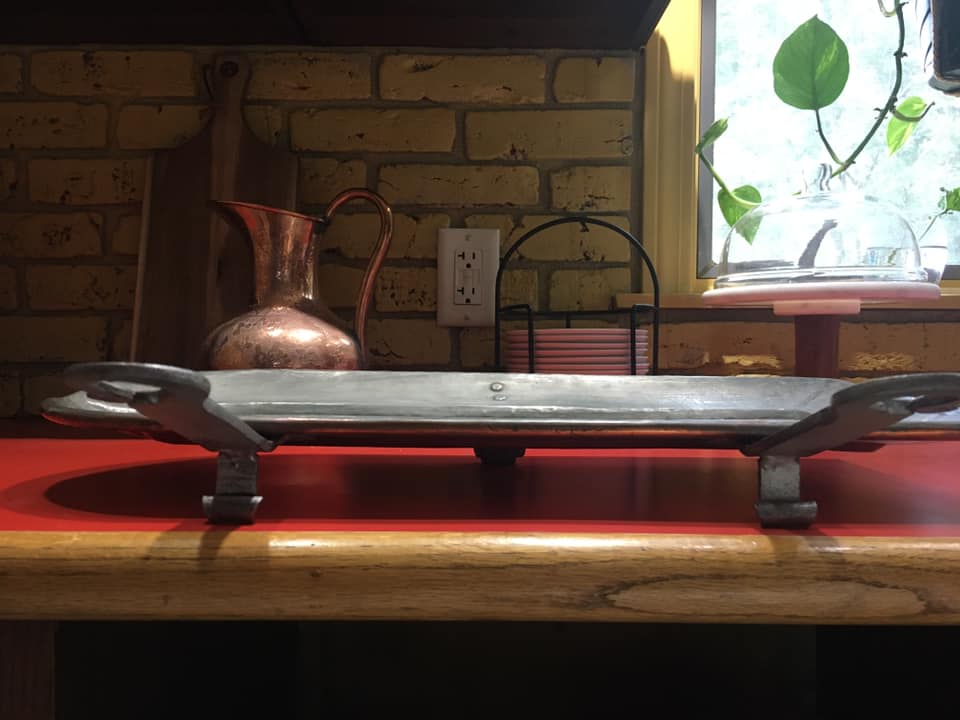
As VFC mentions, information is hard to come by when researching the history of copper cookware. Luckily, I’m able to share some information. During the Middle Ages (think Feudal System), the majority of people were very poor and did not have ovens, so food was either prepared over some sort of hearth or brought to a baker’s shop to have prepared. The few wealthy families who owned large houses had ovens built into fireplaces. Therefore, I assume that lèchefrite pans were owned and used by many people, not limited to class or culinary profession, as everyone needed to eat, and handles would have made it possible, even for the poorest families, to hold lèchefrite pans over fires. That being said, there is a good chance that most, if not all wealthy families and bakers owned and used lèchefrite pans regularly.
As years passed and Europe changed in multiple ways (in no particular order: wars, the formation of countries, geographical border changes, migration, class formation, eventually industrialization, etc.) who owned what, and used what, in kitchens changed. Describing this would require way more knowledge than I have and would turn this post into an encyclopedia. The last bit of information that I was able to find about the history of lechefrite pans comes from the book, Savoring the Past: The French Kitchen and Table from 1300 to 1798 by Barbara Wheaton. In this book, Wheaton describes a typical three-course meal during the Middle Ages, and states that lèchefrite pans were perhaps used to prepare lèchefrite as part of the third course. Please see this book for more information.
This lèchefrite pan’s new home is my kitchen, almost 4,000 miles away from its previous home in France. A fun fact: my husband and I live in an old farmhouse that was constructed in 1890, so my lèchefrite is just about as old as my house, even though it was made, owned and lovingly used and cared for by someone thousands of miles away. This makes me wonder about the history of drip pans here in America and the evolution of their style. Have they always been a basic oval shape in America, or were they once created to look and function the same as this beautiful antique that I now own? Maybe someday I’ll find out. Nevertheless, I love my lèchefrite (drip) pan for all that it is, that it was, and all that it brings to the table.
VFC says: I have always wondered about these funny-shaped pans with feet — Amy, thank you so much for writing about yours! It is a beautiful piece indeed. I had not considered all the various uses for it — but as you say, it was no doubt an important piece of kitchen equipment used for multiple purposes. I love that you’re planning to use it to help your niece and nephew learn about and appreciate copper, too.
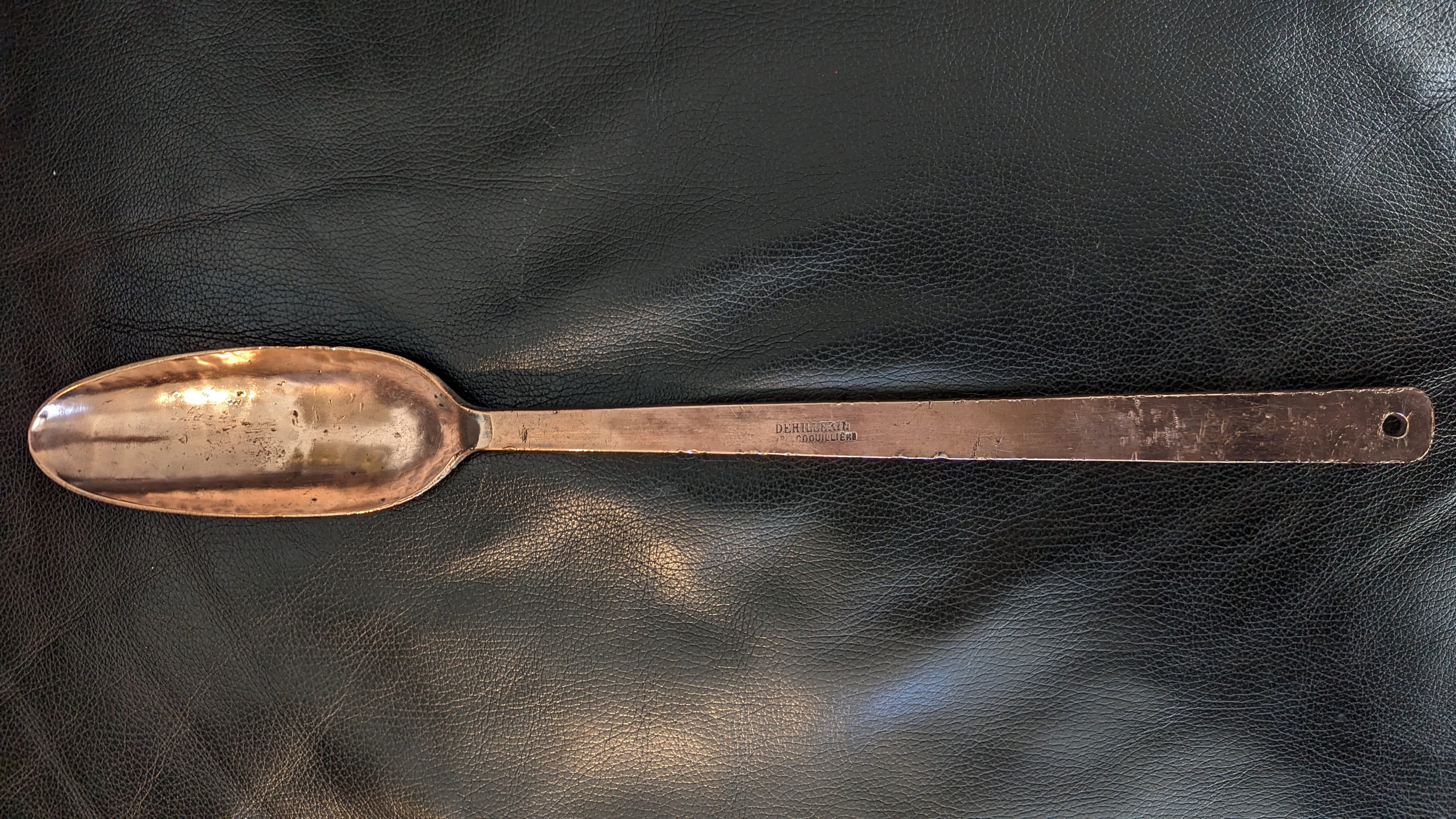

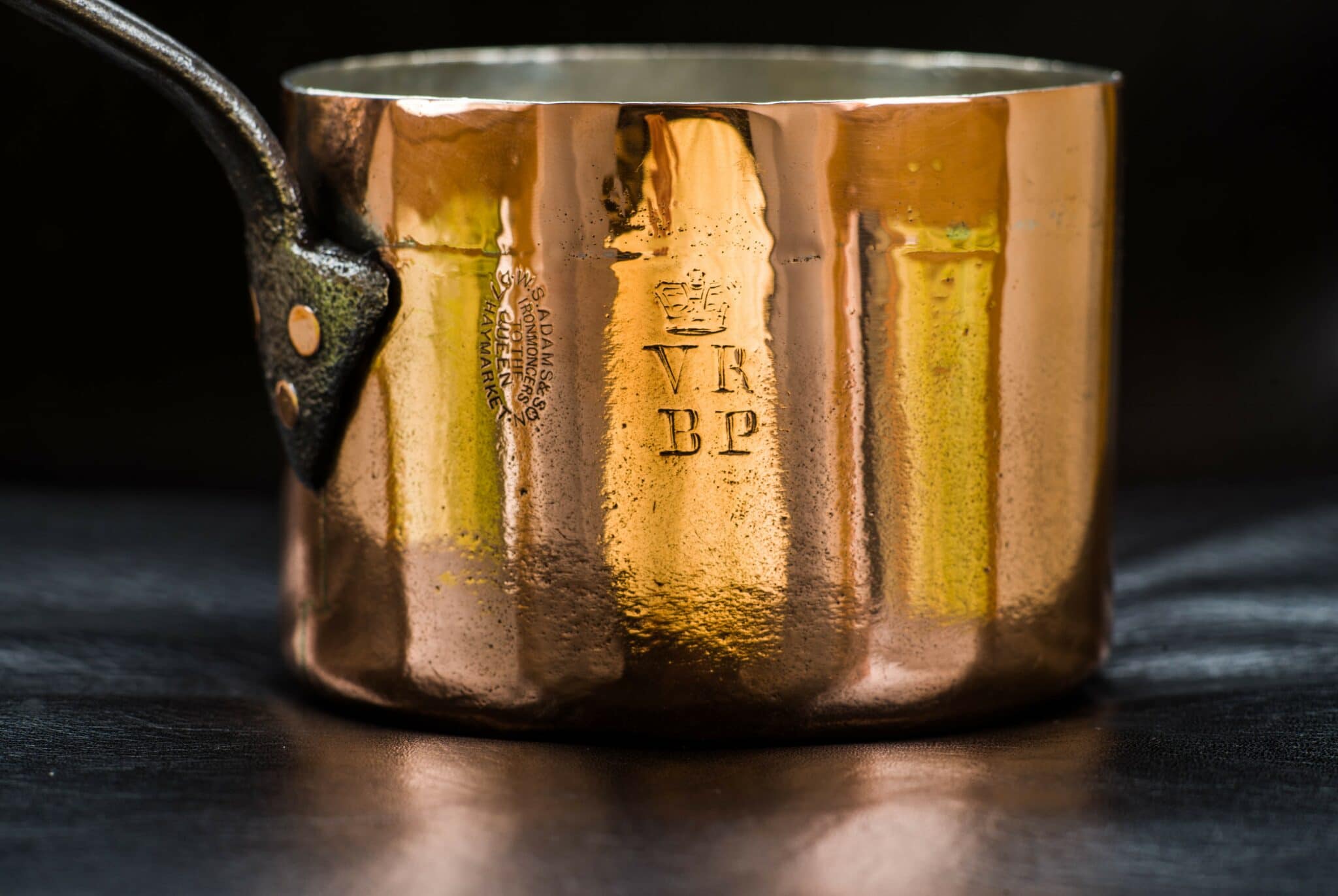

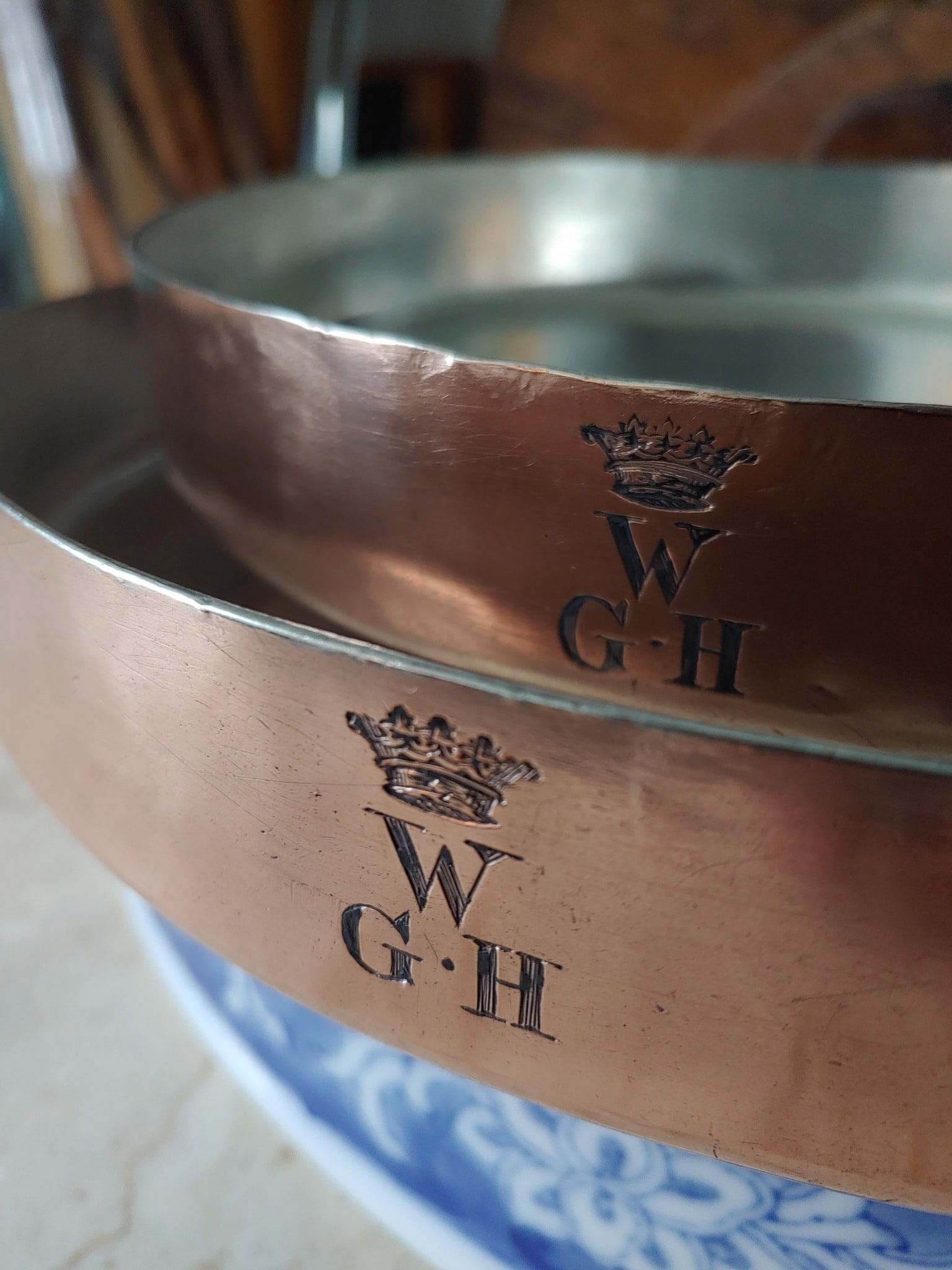
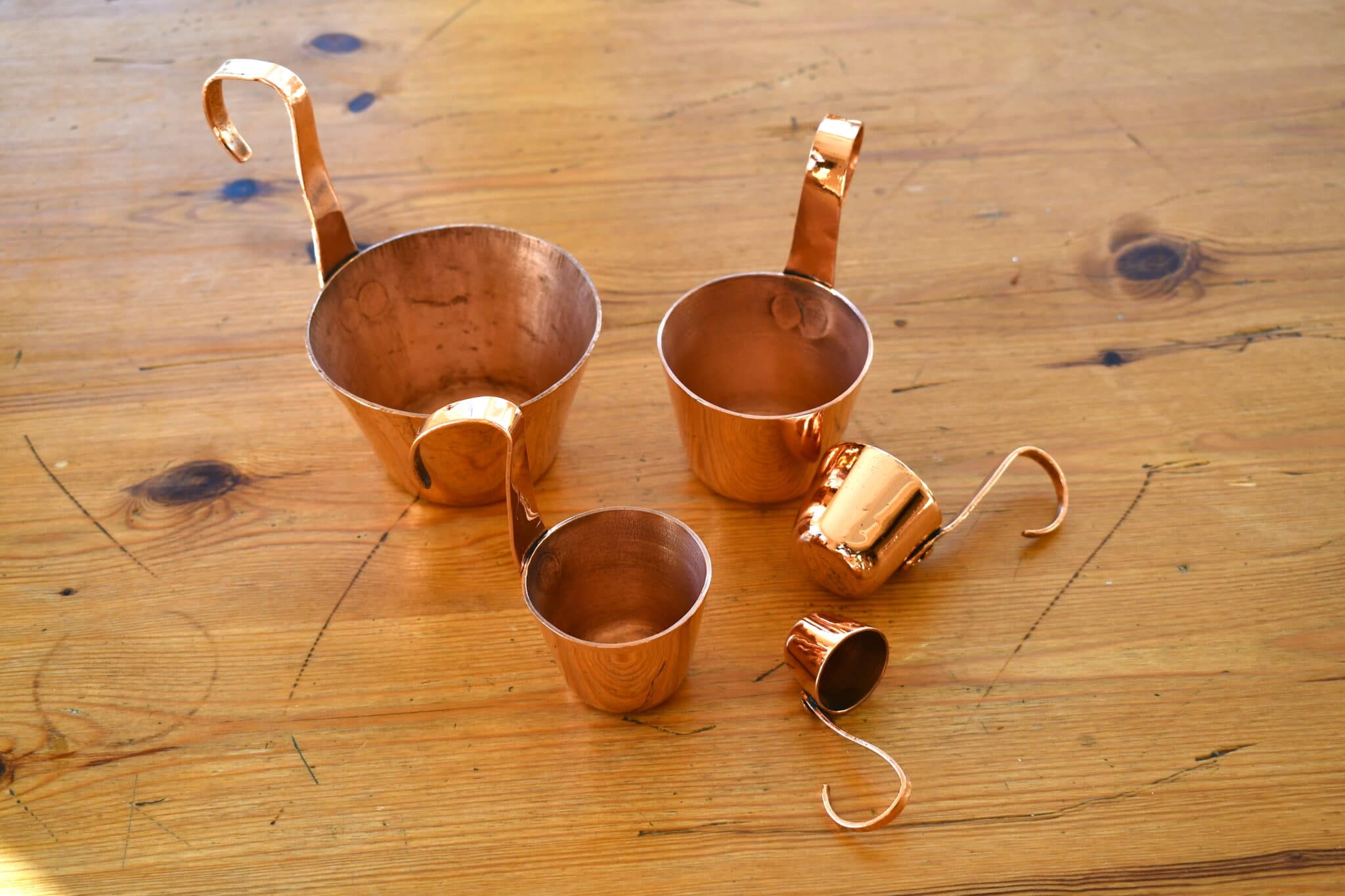
Thank you VFC for the lovely comment and for sharing!
Thank you for this post. I am in Italy and see these lechefrite at the antique markets. Here they are not as fancy as the one presented. We know that a tin copper pan can’t be put on the heat without liquid or oil already in it, I wonder what they where doing.
Hi Sylvie! I believe the concerns about overheating tinned pans are largely regarding modern ovens and stovetops — I doubt that an open hearth could have come anywhere near 450F (230C), the temperature at which a tin lining begins to soften.
Hi Sylvie! I don’t know, but if I had to guess, pans were placed at different heights above fires to control heat for different types of cooking, and the use of oils varied based on location and what was being used over time. I bet a lot of tin melted here and there from trial and error, as new cooks today even make mistakes and become adventurous with written instruction. Thanks for the reply!
Hi, the most famous method of grilling today is grilling over a heat source (charcoal, gas, electricity). A “lèchefrite”, ie a drip tray, is used for another type of grilling. In this variant, the heat source is located vertically behind the food. The dripping pan or a container is located under the food to catch the dripping fat and the juices. This means that the lechefrite is not exposed to the greatest heat and therefore the tin will not melt. You can also use a fireplace to grill with this method. Again, the food is not over the embers, but in front of it.
In Europe, you can often see this grill method, especially for chicken on a spit, at annual or weekly markets, with the gas grill installed in a small truck.
Hi,
I know that it is semantics and that terms vary internationally but in British English this means of cooking meat by the radiant heat of a fire is roasting. The modern way of cooking a joint of meat in an oven though commonly called roasting is actually baking. The change came about largely because of the adoption of coal as a fuel. A little smoke from a wood fire can be an asset in cooking, not so with coal smoke.
Since it’s been a few decades since I went to school and learned English, I occasionally have to use “Google translater” and various dictionaries. However, their translation suggestions often do not correspond to the meaning or use of a word in my language. I now have the greatest respect for professional translators (interpreters?)
If my words were chosen poorly, I am sorry and I am trying to make them clear.
Grilling = barbecuing (BBC) or to broil sth. (French: grillage, rôti sur le gril)
Charocoal = embers of wood charcoal (not coal!)
Rotisserie: a cooking appliance with a rotating spit for roasting and barbecuing meat.
The rotating spit can be placed over the embers or in front of the embers. In the second method, the meat is prepared, refined or roasted with radiant heat.
Hi Roger!
Roasting for us in the states is essentially baking as well, just at a higher heat! 400 degrees or above commonly. I’m enjoying all of this conversation thank’s for the comment!
Hi Martin!
The more I think about it, we have so many different cooking methods that vary from country to country and throughout the world! Many similar, some different! This was probably likely from one community to the other, and from one household to another, back in the day as well? Lack of historic written sources leaves so much to the imagination. Anyway, I hadn’t considered vertical roasting! Thanks for the reply!
Fascinating article, beautifully researched, Amy.
Well researched informative and interested research.
Thank you, Fid!! You guys are the best. Thank you for the beautiful and useful copper!